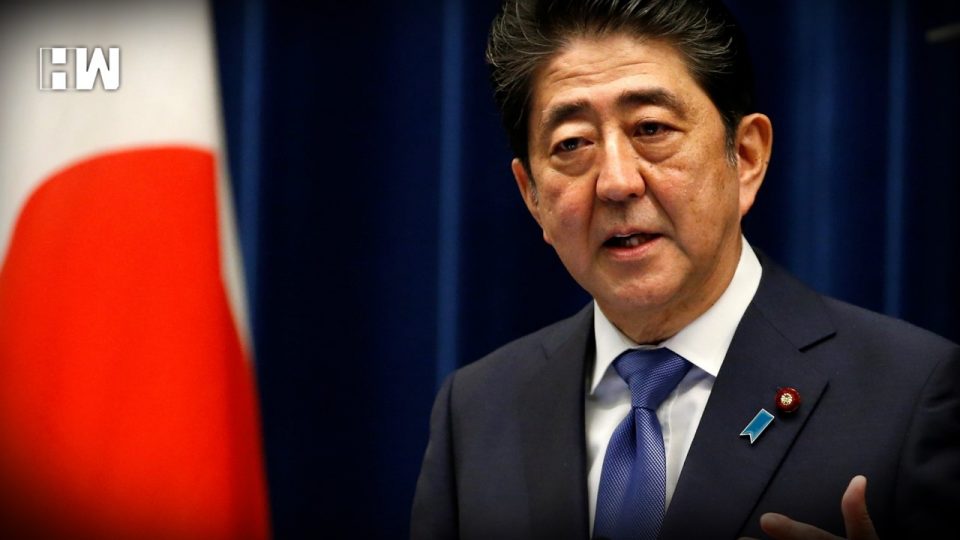Japan’s prime minister Shinzo Abe headed today to one of the areas worst-hit by record rains as the death toll rose to 179 and thousands of evacuees remained stranded in shelters.
Abe, who cancelled a four-stop foreign trip planned for this week as the disaster worsened, was due to visit the flood-ravaged Okayama area to see the scale of the damage first-hand.
With dozens reportedly still missing, the toll from the worst weather-related disaster in Japan in over three decades is expected to rise further.
Rescue workers were still digging through the aftermath of flash floods and landslides that swallowed whole neighbourhoods, but hopes were fading that any new survivors could be found.
Abe was scheduled to fly over the Mabi district to view the damage and meet with evacuees and local officials to discuss their needs.
Over 10,000 people were still in shelters across large parts of central and western Japan, local media said, including at a school in the town of Kurashiki in Okayama prefecture.
Around 300 people spent the night at the Okada Elementary School, many of them sleeping on blue mats laid out in the school’s gym.
Hiroko Fukuda, 40, was there was with her husband, but they had sent her young daughter to stay with relatives after she became so distressed by the evacuation that she stopped eating.
The family fled their home on Friday night, and returned Monday to discover the entire ground floor had been submerged beneath floodwaters that ruined everything from electronics to photos.
“We can accept losing things like home appliances, but memories,” she said, her voice trailing off.
“We can’t get back photos of her at three years old,” she said of her daughter.
“It hurts that our memories are gone.”
Among the things ruined by the flooding were Fukuda’s kimonos, including a “furisode” worn on special occasions.
“I had wanted my daughter to wear it,” Fukuda said, her eyes filling with tears.
The days of record rainfall transformed roads into rivers, and waves of mud swept down hillsides, carrying cars and trees with them.
In Kurashiki, the receding floods have left a layer of silt on everything that was underwater.
Crushed cars and fallen trees moved by work crews to either side of one main street formed piles of debris lining the road.
And despite the let-up in the rains, new flood warnings were still being issued today.
The town of Fukuyama in Hiroshima prefecture issued an evacuation order over
fears that a small lake could burst its banks.
A similar order was issued Tuesday in the town of Fuchu, also in Hiroshima, after driftwood backed up in a river, causing water to crest over its banks and submerge surrounding neighbourhoods.
An official there said Wednesday that the alert had been downgraded, but urged residents to remain cautious.
“The water level is expected to go down, as we are clearing driftwood and other rubble, but that’s far from a guarantee of safety,” he told AFP by phone.
“In no way can I say that we are safe now, there’s no telling if or when water could gush out again.” Government officials have also warned people to remain on guard against the possibility of fresh landslides, with the torrential rain loosening earth on hillsides around residential areas.
And with the end of the rains, searing heat brought new risks, as blazing sun and temperatures up to 35 Celsius (95 Fahrenheit) posed challenges for people living in modestly equipped shelters or damaged homes with no electricity or running water.
Over 75,000 police, firemen and troops have been deployed to dig through the rubble looking for survivors, or victims of the disaster.
“We are keeping up our search-and-rescue work,” said Mutsunari Imawaka, an official with Okayama prefecture, adding that over 1,000 people were involved in the effort in the one part of Kurashiki alone.
But nearly a week after the rains first began, hopes that missing people could still be alive have dwindled.
As an independent media platform, we do not take advertisements from governments and corporate houses. It is you, our readers, who have supported us on our journey to do honest and unbiased journalism. Please contribute, so that we can continue to do the same in future.

